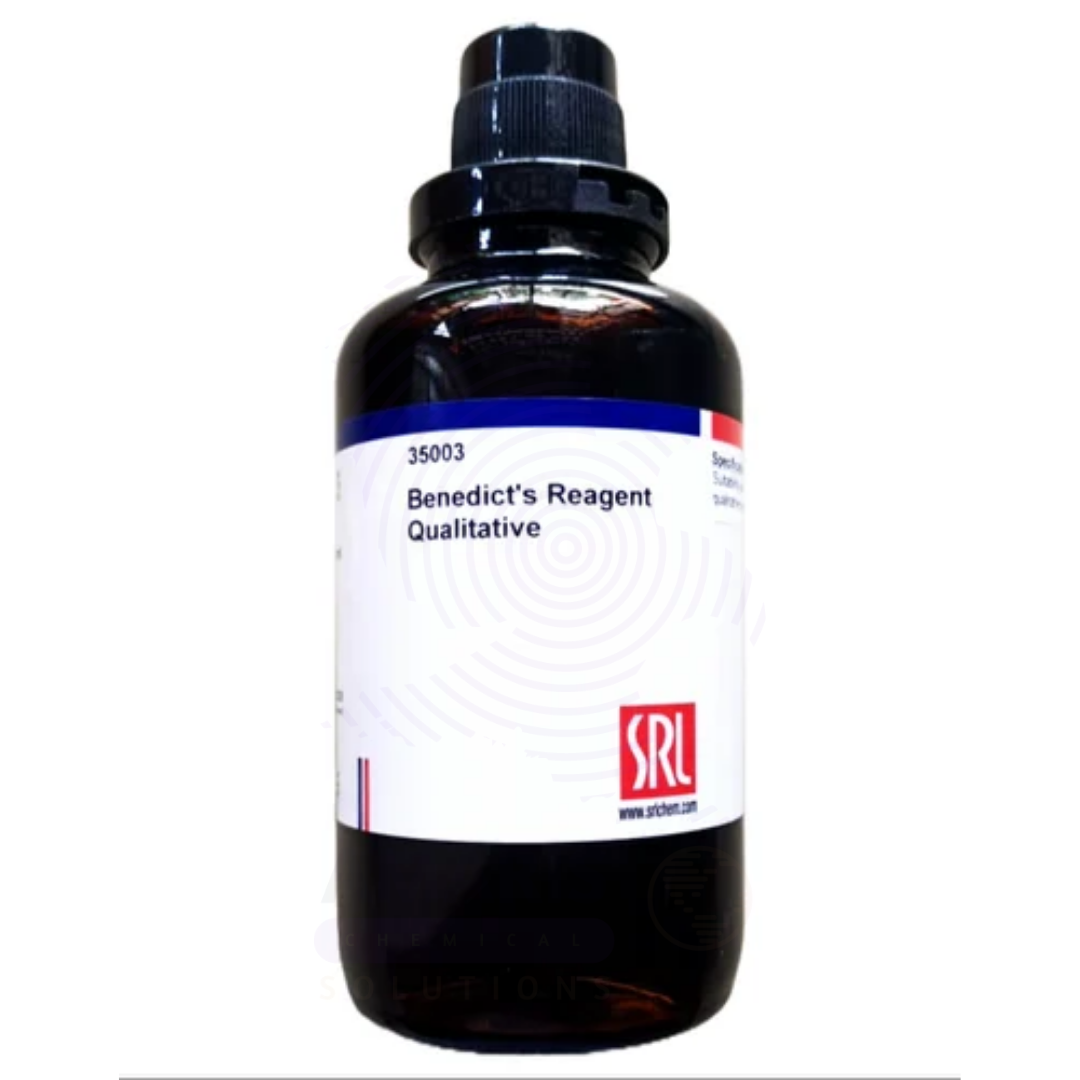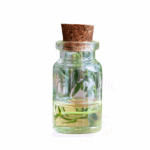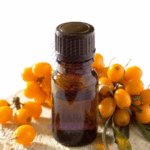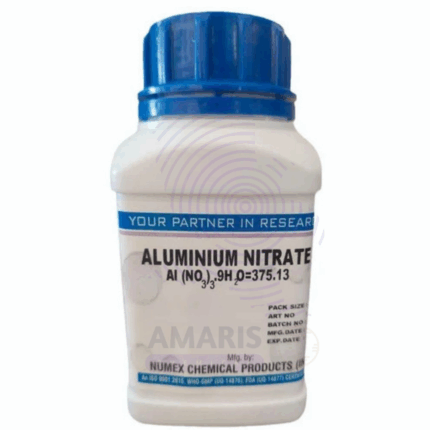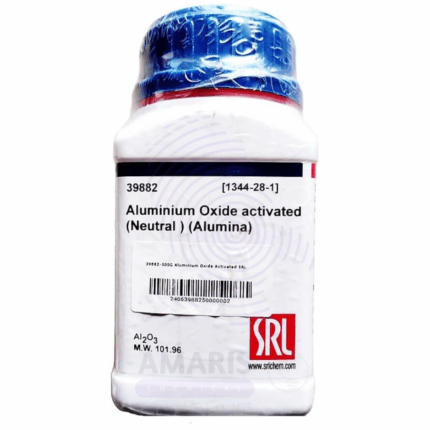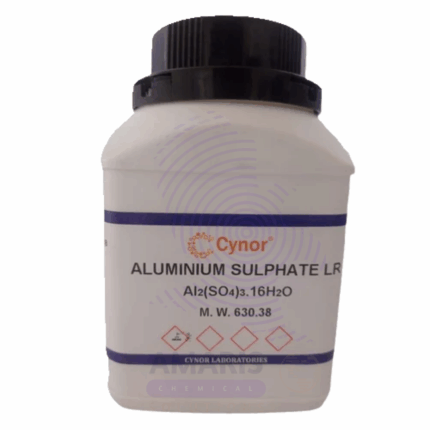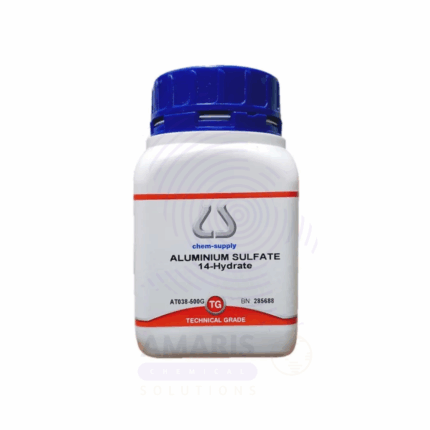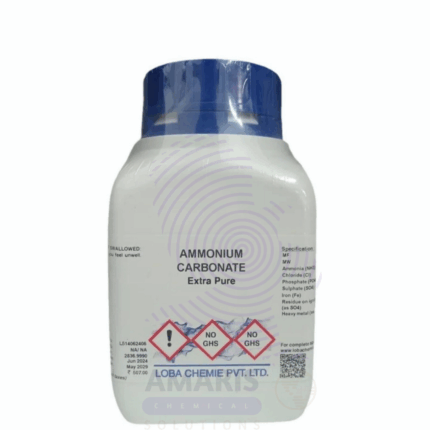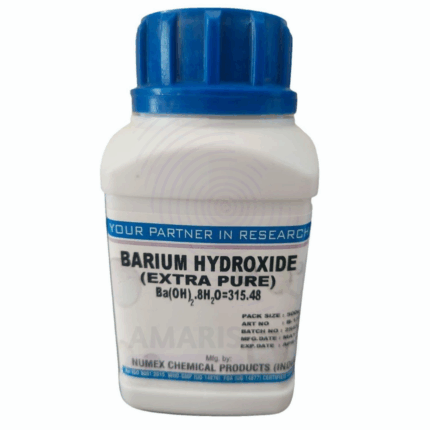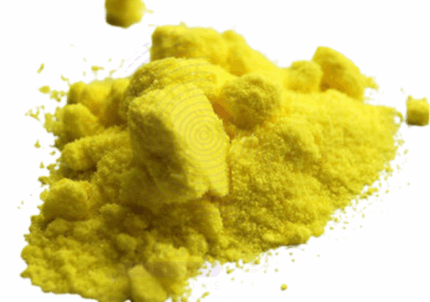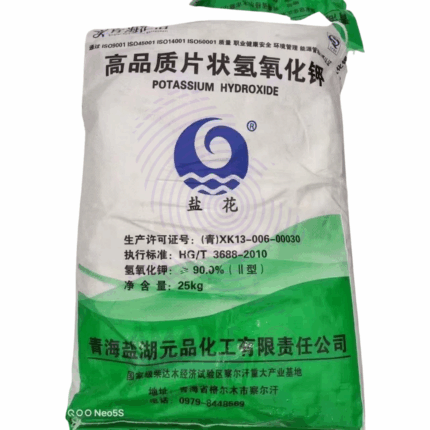Benedict Solution Extra Pure
$ 35.00 Original price was: $ 35.00.$ 34.78Current price is: $ 34.78.
Benedict Solution Extra Pure is a high-purity, blue-colored reagent solution widely used in laboratory settings for the qualitative detection of reducing sugars, such as glucose and fructose. It contains copper(II) sulfate, sodium citrate, and sodium carbonate, which react with reducing sugars under heat to form a colored precipitate ranging from green to brick red, depending on sugar concentration. This makes it essential in biochemical and educational laboratories for carbohydrate analysis and metabolic studies. The extra pure grade ensures consistent composition and reliable colorimetric response, supporting accurate and reproducible results in teaching and research environments. It should be stored in a cool, dark place in a tightly sealed container to maintain stability and prevent degradation.
Benedict Solution Extra Pure
Primary Uses
- Detection of Reducing Sugars
- Benedict’s solution is widely used to test for the presence of reducing sugars (e.g., glucose, fructose, maltose) in qualitative carbohydrate analysis.
- Upon heating with a reducing sugar, it forms a brick-red precipitate of cuprous oxide (Cu₂O), indicating a positive result.
- Educational Demonstrations in Carbohydrate Chemistry
- Commonly used in school and university teaching labs to demonstrate color change reactions, oxidation-reduction, and sugar classification.
- Semi-Quantitative Estimation of Sugar Levels
- In some cases, the intensity of the color change (blue → green → yellow → orange → red) is used to estimate approximate sugar concentration in a sample.
Secondary Uses
- Urinalysis Simulations in Clinical Chemistry Training
- Used in lab simulations for clinical biochemistry, especially to mimic testing for glucosuria (presence of glucose in urine).
- Teaching Redox Chemistry
- Demonstrates redox principles, where Cu²⁺ (blue) is reduced to Cu⁺ (red precipitate), and the sugar is oxidized — ideal for oxidation-reduction education.
- Comparison with Other Sugar Reagents
- In comparative studies with Fehling’s solution, Tollen’s reagent, or Barfoed’s reagent, it helps differentiate mono- and disaccharides, or reducing vs. non-reducing sugars.
- Baseline Control in Analytical Method Development
- Serves as a reference reagent in developing or validating newer methods of sugar detection in complex matrices.
| PACK SIZE |
2.5 Litres Glass bottle |
|---|
1. Basic Identification Attributes
- Chemical Name: Benedict's Solution
- CAS Number: Mixture (no single CAS; components have individual CAS numbers)
- HS Code: 38229090 (Prepared diagnostic or laboratory reagents)
- Molecular Formula: Mixture — primarily contains:
- Copper(II) sulfate pentahydrate (CuSO₄·5H₂O)
- Sodium carbonate (Na₂CO₃)
- Sodium citrate (C₆H₅Na₃O₇)
- Synonyms:
- Benedict Reagent
- Benedict Qualitative Solution
- Benedict's Test Solution
2. Physical & Chemical Properties
- Physical State: Aqueous solution
- Color & Odor: Blue liquid; odorless or mildly alkaline odor
- Boiling Point: Approx. 100 °C (water-based)
- Melting Point: Not applicable
- Density: ~1.05–1.10 g/cm³
- Solubility: Completely miscible in water
- pH Level: Mildly alkaline (around pH 9–10)
- Vapor Pressure: Similar to water
- Flash Point: Not flammable
- Autoignition Temperature: Not applicable
- Viscosity: Low (water-like)
3. Safety & Hazard Attributes
- GHS Classification:
- Not classified as hazardous
- Copper salts may be harmful if ingested in large quantities
- NFPA Ratings:
- Health: 1
- Flammability: 0
- Reactivity: 0
- Exposure Limits:
- OSHA PEL (Copper dust/mist): 1 mg/m³ (TWA)
- Reactivity:
- Stable under normal lab conditions
- Reacts with strong acids (releases CO₂)
4. Storage & Handling Attributes
- Storage Conditions:
- Store tightly sealed at room temperature (15–25 °C)
- Avoid light and contamination
- Incompatible Materials:
- Strong acids
- Reducing agents (may cause unwanted reactions)
- Container Type:
- Amber glass or HDPE/plastic lab bottles
- Shelf Life:
- Typically 1–2 years in sealed containers
- Special Handling:
- Wear gloves and lab coat
- Wash skin thoroughly after handling
- Use in a well-ventilated area
5. Regulatory & Compliance Attributes
- Regulatory Status:
- Not regulated under DOT or IATA
- Components like CuSO₄ are listed in REACH and TSCA
- Hazard Symbols (GHS):
- May include exclamation mark if high copper concentration
- Transportation Restrictions:
- Not classified as hazardous for transport
- Waste Disposal:
- Dispose as chemical waste
- Avoid disposal in drains due to copper content
- Follow local environmental regulations
6. Environmental & Health Impact
- Ecotoxicity:
- Copper component is toxic to aquatic life
- Persistence:
- Copper persists in the environment; must be disposed of properly
- Carcinogenicity/Mutagenicity:
- Not classified as carcinogenic
- Biodegradability:
- Inorganic; not biodegradable
SAFETY PRECAUTIONS
- Personal Protective Equipment (PPE):
- Wear lab coat, chemical-resistant gloves, and safety goggles.
- Use a face shield if splashing is likely.
- Handling:
- Handle in a well-ventilated area or fume hood.
- Avoid contact with skin and eyes; avoid inhaling vapors or mist.
- Stir gently during heating to prevent spattering.
- Storage:
- Store in a cool, dry, and dark place.
- Keep the container tightly closed when not in use.
- Avoid storing near strong acids or oxidizers.
- Hygiene Measures:
- Wash hands thoroughly after handling.
- Avoid eating or drinking in the lab.
FIRST AID MEASURES
- Inhalation:
- Remove victim to fresh air.
- Get medical advice if symptoms persist.
- Skin Contact:
- Wash thoroughly with water and soap.
- Remove contaminated clothing.
- Eye Contact:
- Rinse immediately with plenty of water for at least 15 minutes.
- Seek medical help if irritation persists.
- Ingestion:
- Rinse mouth with water.
- Do not induce vomiting.
- Seek medical attention immediately.
FIRE FIGHTING MEASURES
- Extinguishing Media:
- Use CO₂, foam, dry chemical, or water spray.
- Fire Hazards:
- Benedict’s Solution is not highly flammable, but components like sodium citrate and copper sulfate may decompose upon heating, releasing:
- Copper fumes
- Irritating or toxic gases (e.g., SOx, COx)
- Benedict’s Solution is not highly flammable, but components like sodium citrate and copper sulfate may decompose upon heating, releasing:
- Protective Equipment:
- Use self-contained breathing apparatus (SCBA) and protective clothing.
- Firefighting Instructions:
- Cool containers with water spray.
- Prevent runoff from entering drains.
Related products
Aluminium Nitrate Extra Pure
Aluminium Oxide Active Neutral Extra Pure
Aluminium Sulphate Anhydrous Extra Pure
Aluminium Sulphate Hydrous Extra Pure
Ammonium Carbonate Extra Pure
Ammonium Carbonate Extra Pure is a high-quality, white crystalline solid widely used across various scientific, industrial, and food-related applications. Manufactured to stringent purity standards, this compound is ideal for laboratories and processes that demand high-grade reagents. With its characteristic ammonia-like odor and ability to decompose upon heating, ammonium carbonate plays a versatile role in both chemical reactions and physical processes.
In aqueous solution, ammonium carbonate breaks down into ammonium bicarbonate and ammonium carbamate, further releasing ammonia (NH₃) and carbon dioxide (CO₂) upon heating. This property makes it especially useful in applications that require controlled gas release or temporary pH modification.


 Preservatives(food)
Preservatives(food) Flavor Enhancers
Flavor Enhancers Acidulants
Acidulants Sweeteners
Sweeteners Antioxidants
Antioxidants Colorants(food)
Colorants(food) Nutraceutical Ingredients (food)
Nutraceutical Ingredients (food) Nutrient Supplements
Nutrient Supplements Emulsifiers
Emulsifiers
 Collectors
Collectors Dust Suppressants
Dust Suppressants Explosives and Blasting Agents
Explosives and Blasting Agents Flocculants and Coagulants
Flocculants and Coagulants Frothers
Frothers Leaching Agents
Leaching Agents pH Modifiers
pH Modifiers Precious Metal Extraction Agents
Precious Metal Extraction Agents
 Antioxidants(plastic)
Antioxidants(plastic) Colorants (Pigments, Dyes)
Colorants (Pigments, Dyes) Fillers and Reinforcements
Fillers and Reinforcements Flame Retardants
Flame Retardants Monomers
Monomers Plasticizers
Plasticizers Polymerization Initiators
Polymerization Initiators Stabilizers (UV, Heat)
Stabilizers (UV, Heat)
 Antifoaming Agents
Antifoaming Agents Chelating Agents
Chelating Agents Coagulants and Flocculants
Coagulants and Flocculants Corrosion Inhibitors
Corrosion Inhibitors Disinfectants and Biocides
Disinfectants and Biocides Oxidizing Agents
Oxidizing Agents pH Adjusters
pH Adjusters Scale Inhibitors( water)
Scale Inhibitors( water)
 Antioxidants(cosmetic)
Antioxidants(cosmetic) Emollients
Emollients Fragrances and Essential Oils
Fragrances and Essential Oils Humectants
Humectants Preservatives
Preservatives Surfactants(cosmetic)
Surfactants(cosmetic) Thickeners
Thickeners UV Filters
UV Filters
 Fertilizers
Fertilizers Soil Conditioners
Soil Conditioners Plant Growth Regulators
Plant Growth Regulators Animal Feed Additives
Animal Feed Additives Biostimulants
Biostimulants Pesticides (Herbicides, Insecticides, Fungicides)
Pesticides (Herbicides, Insecticides, Fungicides)
 Active Pharmaceutical Ingredients (APIs)
Active Pharmaceutical Ingredients (APIs) Excipients
Excipients Solvents(pharmaceutical)
Solvents(pharmaceutical) Antibiotics
Antibiotics Antiseptics and Disinfectants
Antiseptics and Disinfectants Vaccine Adjuvants
Vaccine Adjuvants Nutraceutical Ingredients (pharmaceutical)
Nutraceutical Ingredients (pharmaceutical) Analgesics & Antipyretics
Analgesics & Antipyretics
 Analytical Reagents
Analytical Reagents Solvents(lab)
Solvents(lab) Chromatography Chemicals
Chromatography Chemicals Spectroscopy Reagents
Spectroscopy Reagents microbiology-and-cell-culture-reagents
microbiology-and-cell-culture-reagents Molecular Biology Reagents
Molecular Biology Reagents Biochemical Reagents
Biochemical Reagents Inorganic and Organic Standards
Inorganic and Organic Standards Laboratory Safety Chemicals
Laboratory Safety Chemicals Specialty Laboratory Chemicals(Special Laboratory Equipment)
Specialty Laboratory Chemicals(Special Laboratory Equipment)
 Demulsifiers
Demulsifiers Hydraulic Fracturing Fluids
Hydraulic Fracturing Fluids Scale Inhibitors(oil)
Scale Inhibitors(oil) Surfactants(oil)
Surfactants(oil) Drilling Fluids
Drilling Fluids
 Dyes and Pigments
Dyes and Pigments Bleaching Agents
Bleaching Agents Softening Agents
Softening Agents Finishing Agents
Finishing Agents Antistatic Agents
Antistatic Agents
 Admixtures
Admixtures Waterproofing Agents
Waterproofing Agents Sealants and Adhesives
Sealants and Adhesives Curing Compounds
Curing Compounds Concrete Repair Chemicals
Concrete Repair Chemicals Anti-Corrosion Coatings
Anti-Corrosion Coatings
 Surfactants(cleaning)
Surfactants(cleaning) Builders
Builders Enzymes
Enzymes Solvents (Cleaning)
Solvents (Cleaning) Fragrances
Fragrances
 Electronic Chemicals
Electronic Chemicals Catalysts
Catalysts Lubricants
Lubricants Photographic Chemicals
Photographic Chemicals Refrigerants
Refrigerants Automotive chemicals
Automotive chemicals Pyrotechnic Chemicals
Pyrotechnic Chemicals
 Biodegradable Surfactants
Biodegradable Surfactants Bio-based Solvents
Bio-based Solvents Renewable Polymers
Renewable Polymers Carbon Capture Chemicals
Carbon Capture Chemicals Wastewater Treatment Chemicals
Wastewater Treatment Chemicals
 Pigments
Pigments Solvents(paint)
Solvents(paint) Specialty Coatings
Specialty Coatings Binders/Resins
Binders/Resins Additives
Additives Driers
Driers Anti-Corrosion Agents
Anti-Corrosion Agents Functional Coatings
Functional Coatings Application-Specific Coatings
Application-Specific Coatings
 Fresh Herbs
Fresh Herbs Ground Spices
Ground Spices Whole Spices
Whole Spices Spice Blends
Spice Blends Dried Herbs
Dried Herbs
 Leavening Agents
Leavening Agents Dough Conditioners
Dough Conditioners Flour Treatments
Flour Treatments Fat Replacers
Fat Replacers Decoratives
Decoratives Preservatives(baking)
Preservatives(baking)
 Plasticizers & Softeners
Plasticizers & Softeners Reinforcing Agents
Reinforcing Agents Adhesion Promoters
Adhesion Promoters Vulcanizing Agents
Vulcanizing Agents Antidegradants
Antidegradants Blowing Agents
Blowing Agents Fillers & Extenders
Fillers & Extenders Accelerators & Retarders
Accelerators & Retarders